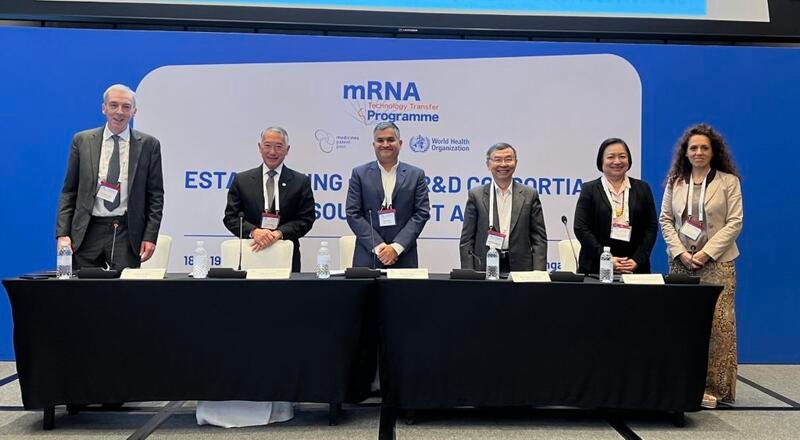
Photo Credit: 4th Scientific Colloquium
At the mRNA Technology Transfer Program organized by the World Health Organization (WHO) and Medicines Patent Pool (MPP) in Singapore, four South-East Asia research consortia formalized collaboration to advance vaccine technology.
International Vaccine Institute (IVI South Korea), Hilleman Laboratories (Singapore), Chula Vaccine Research Center (Thailand), and Mahidol Vivax Research Unit (Thailand) signed a joint declaration to pledge collaboration on research consortia to accelerate mRNA vaccines against dengue and other priority pathogens afflicting Southeast Asia. The pivotal moment marks a significant milestone in collaborative vaccine R&D in channeling collective capabilities to confront global health challenges and pandemic preparedness.
The collective commitment from research institutions represent diverse fields, including health, product research, and development, and acknowledge the transformative potential of the mRNA Technology Transfer Programme in low- and middle-income countries (LMICs).
The initiative includes collaborative research consortia focused on developing mRNA vaccines targeting dengue, enterovirus-A71/Coxsackie, human papillomavirus, and Plasmodium vivax – diseases severely affecting the region. The consortia pledge to share material, data, and intellectual property equitably and non-exclusively with the Programme Partners.
The 4th scientific colloquium of the mRNA Technology Transfer Programme unfolds the crux of the below listed landmark collaborations. The signing of the ‘declaration of commitment’ encapsulated the ethos of international cooperation and the unwavering resolve to advance mRNA vaccine development up to proof of concept and early phase clinical trials in South-East Asia.
Established in 2021, the mRNA Technology Transfer Programme brings together Programme partners from 15 countries, of which five are in the Asia region. The Programme aims to contribute to equitable access to mRNA vaccines by increasing the distribution of sustainable manufacturing capacity across LMICs.




